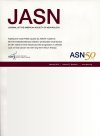Lysosomal-Associated Protein Transmembrane 5, Tubular Senescence, and Progression of CKD
Lysosomal-associated protein transmembrane 5 (LAPTM5) is increased in tubular epithelial cells in CKD.Conditional knockout of Laptm5 in tubules attenuates kidney fibrosis in mice with CKD.LAPTM5 contributes to tubular senescence by inhibiting WWP2-mediated ubiquitination of notch1 intracellular domain.
Background
Tubular senescence is a major determinant of CKD, and identification of potential therapeutic targets involved in senescent tubular epithelial cells has clinical importance. Lysosomal-associated protein transmembrane 5 (LAPTM5) is a key molecule related to T- and B-cell receptor expression and inflammation. However, the expression pattern of LAPTM5 in the kidney and the contribution of LAPTM5 to the development of CKD are unknown.
Methods
Laptm5−/− mice and tubule specific–Laptm5 knockout mice were used to examine the role of LAPTM5 in tubular senescence by establishing different experimental mouse CKD models.
Results
LAPTM5 expression was significantly induced in the kidney, especially in proximal tubules and distal convoluted tubules, from mice with aristolochic acid nephropathy, bilateral ischemia/reperfusion injury–induced CKD, or unilateral ureter obstruction. Tubule-specific deletion of Laptm5 inhibited senescence of tubular epithelial cells and alleviated tubulointerstitial fibrosis in aged mice. Moreover, Laptm5 deficiency ameliorated kidney injury and tubular senescence in mice with CKD. Mechanistically, LAPTM5 inhibited ubiquitination of notch1 intracellular domain by mediating WWP2 lysosomal degradation and then leading to cellular senescence in tubular epithelial cells. We also observed a higher expression of LAPTM5 in tubules from patients with CKD, and the level of LAPTM5 was correlated with kidney fibrosis and tubular senescence in people with CKD.
Conclusions
LAPTM5 contributed to tubular senescence by regulating the WWP2/notch1 intracellular domain signaling pathway and exacerbated kidney injury during the progression of CKD.




